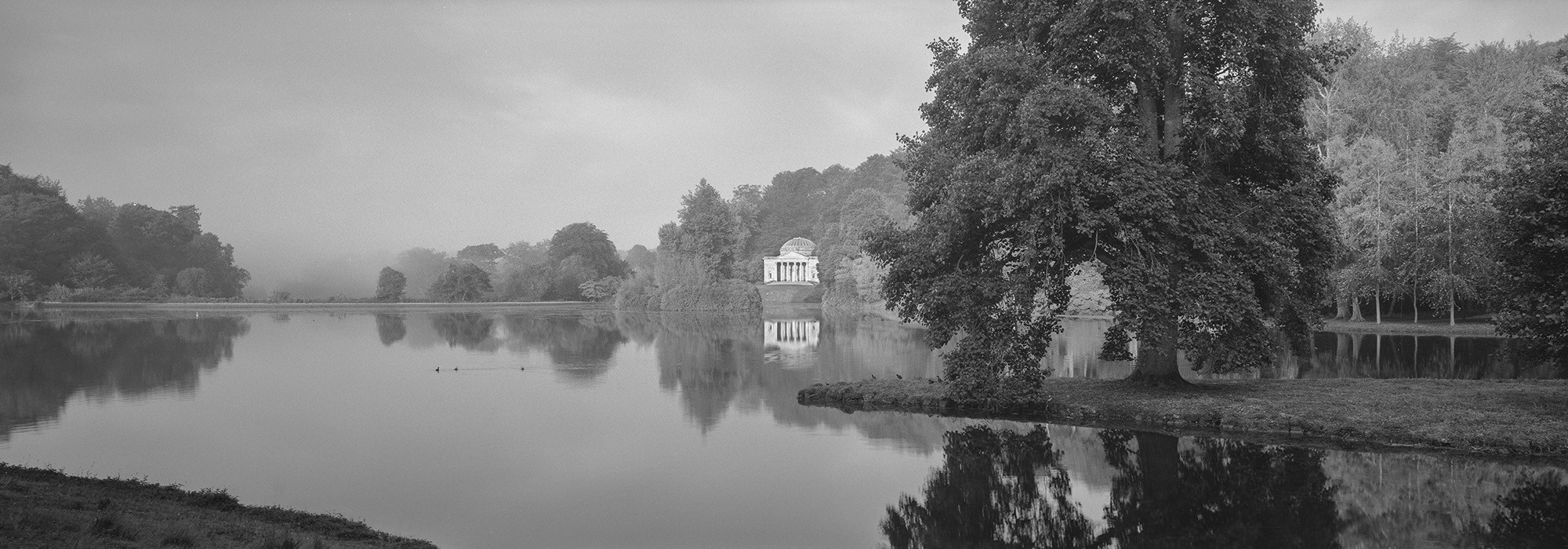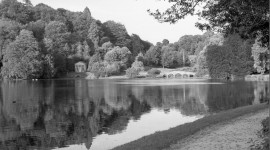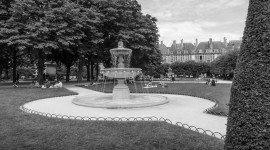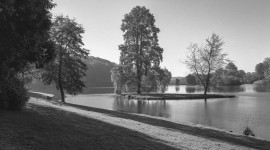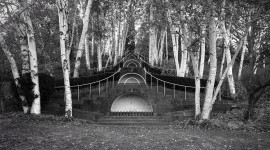Q&A with Alan Ward
1. What attracted you first, photography or landscape? And what was it about each that attracted you?
I first studied and practiced architecture, and started teaching in architecture early in my career, when in my 20s. One of my classes was photography for design students. I worked with an accomplished photographer, Craig Kuhner, who taught me large format (4”X5” view camera) architectural photography. I then went to graduate school to study landscape architecture at Harvard and did some commercial architectural photography to help with expenses. As I became more familiar with the history of landscape architecture, I then applied the rigor and discipline that is required for large format architectural photography to the designed landscape. Just after graduating I did the photography with a view camera for a few exhibitions that included the designs of Dan Kiley, Beatrix Farrand, Fletcher Steele and others. I loved the subtlety of photographs of landscape design as compared to images of architecture. Light in the landscape varies by the season and weather, so that each time visiting a site - the photographs can potentially produce refreshingly different results. That is compared to a good view of architecture which is typically more predictable based on the light striking a building at a certain time of day that reveals the three-dimensional form of the design. I started at Sasaki shortly after graduating from the GSD and worked on a range of interesting and typically large planning and design projects. I continued my photography of designed landscapes because it allowed me to have a pursuit where I could do photography on a weekend and then shortly after, work in the darkroom to make prints that people admired. The planning and design projects could take years to realize, working with large in-house teams and with other consultants, while the photography appealed my personal and instinctive desire to make things – to have a craft.
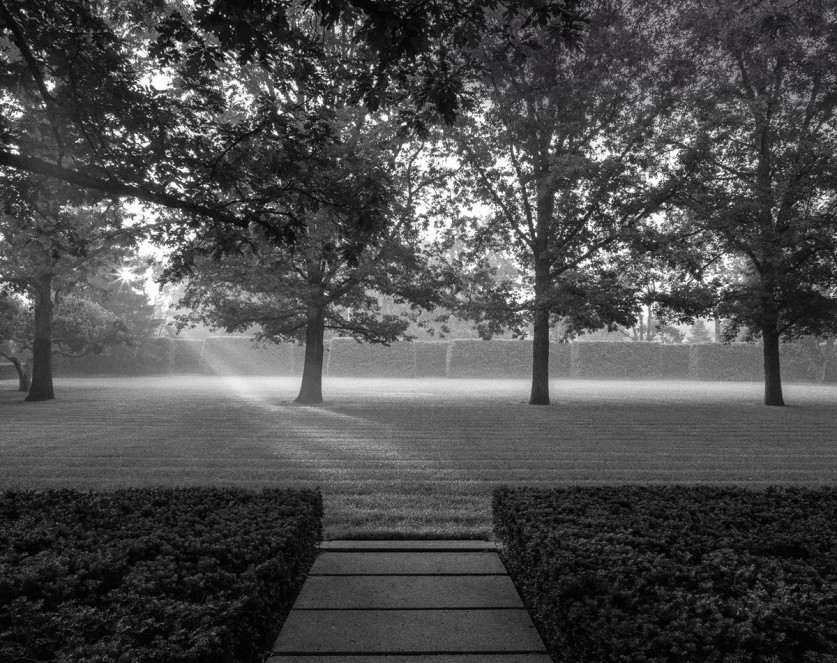
When I started out, the projects that I photographed were selected by prominent landscape architects putting together exhibitions, so I photographed Dan Kiley’s projects for the exhibition Pete Walker was putting together at Harvard to bring more visibility to Kiley’s work. I photographed key projects by Beatrix Farrand, identified by Diana Balmori, for the exhibition at Wave Hill in New York honoring her work. I worked with Michael Van Valkenburgh on the “Built Landscapes: Gardens of the Northeast” exhibit which opened at Harvard and circulated nationally for several years, and included designs by Fletcher Steele, James Rose and A. E. Bye. When Spacemaker Press asked me to do a book of my landscape photographs, I then supplemented this collection of photographs with other sites in America that I selected to make a story of the evolution of American landscape design. Following that monograph, I was asked to do the photography for books on Bryant Park in New York and the FDR Memorial in Washington. Since then, I have tried to add sites to add to this collection and expand the archive to include major landscape designs in England and other parts of Europe.
2. What made you decide to donate your archives to The Cultural Landscape Foundation?
I chose The Cultural Landscape Foundation to donate this archive of images because the foundation has prominent visibility in making known significant designed landscapes, educating people about the importance of the legacy of designed landscapes, as well as being a leading voice when these landscapes are threatened. I envisioned The Cultural Landscape Foundation expanding on its tradition - by using this archive of photographs to help make known these significant gardens, parks, arboreta, and other sites. In comparison, I imagined donating the archive to an educational institution where the work would be filed away – materially and digitally – amidst large volumes of other materials, perhaps lost from view.
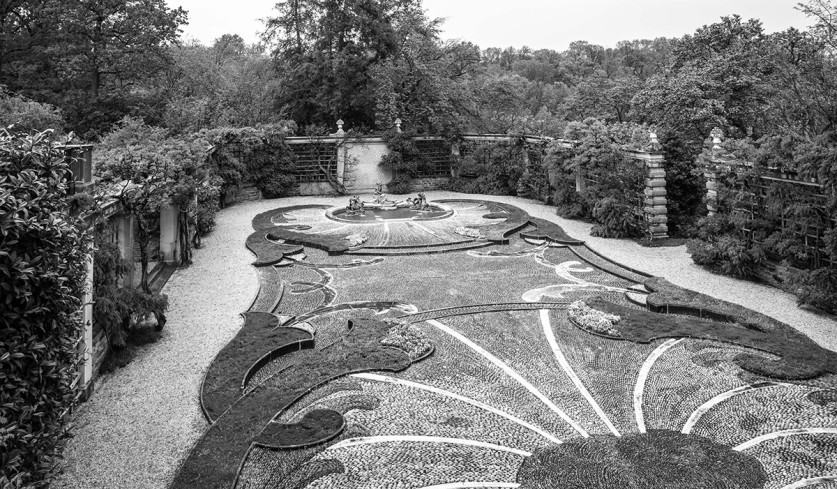
3. Creatively, what does your process look like? When you approach a new project, how much of what you do is planned and how much is left to chance?
Before traveling to a site, I start by researching the history of the designer and the site. What have historians said that is important about the design, and how does the site fit into the history and evolution of landscape architecture? How does the design relate to the evolution in the career of the designer (or designers)? What are the key elements? How has a design been modified and what remains from the original, as well as what are significant additions? After gaining this intellectual framework for the significance of the designer and the project, I go to the site and suspend the rational in favor of a more immediate response to the place, reacting to the experience of moving through the spaces of design – all significant landscape designs have a path, route or choreography that was part of the conception of the place. I try to not over-rationalize the setting up of views to allow the feel of the place to come forward and respond instinctively to the scene. Then when a view and the light seem right, I return to a rational process that requires command of the technology – whether it was film in the past or digital today – to realize the visualization of the image.
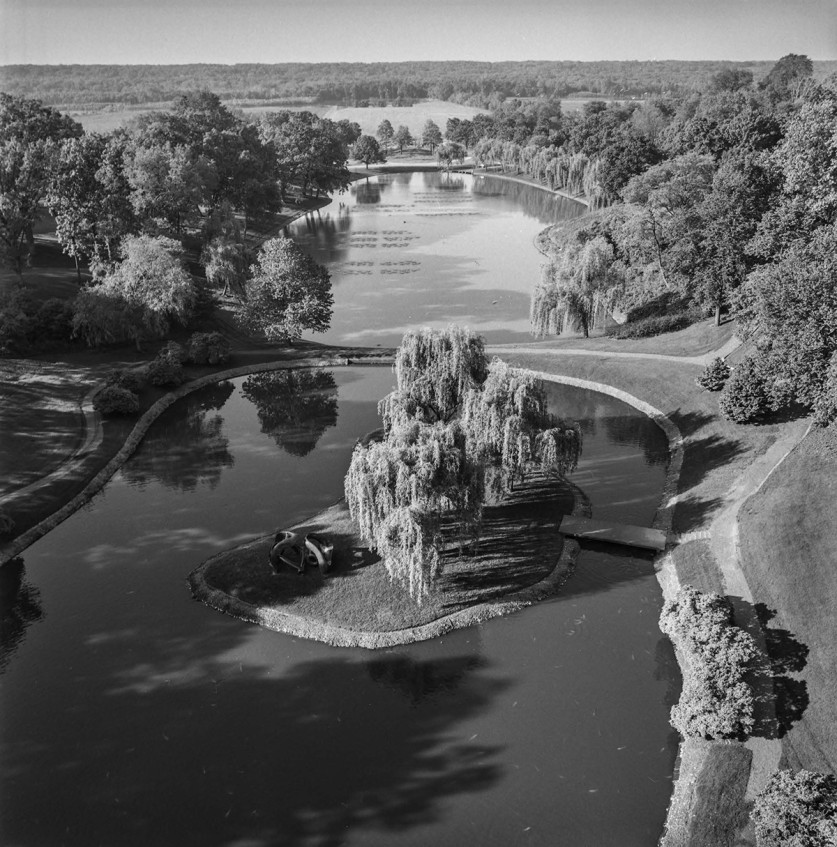
4. What do you seek to create – a timeless or ultimate image? What do you want your photos to do; or, put differently, describe the interaction you want to provoke in a viewer looking at your work.
My aim is to make a set of images of a site that is an interpretation of a landscape design, so that the viewer gains a feel for the essential spirit and character of the place. The photographs are therefore representative of the design, and not documentary photographs. I use the abstracting tendencies of photography to create an image that amplifies certain aspects of the place and diminishes others to create something emblematic of the design, not necessarily a depiction of reality. For example, selecting the tones of black and white, which emphasizes form, space and light over color, is of course an abstraction from everyday vision. I use wide-angle lenses and panoramic cameras that show an area beyond the normal field of human vision, as well as perspective correction lenses to alter geometries and filters to modify tones. The image is therefore quite an abstraction. While it is probably an overused term, it is appropriate to think of my aim as one to make ‘timeless’ images that stand for the landscape designs. Not everyone can experience the site, or in some cases, the design has been lost, so the photographs represent a certain point in time and preserve the design to be experienced in photographs. I am also reminded of what Arthur Drexler, the former Director of the Department of Architecture at the Museum of Modern Art, said about Ezra Stoller’s photographs of modern architecture, “for many architecture students Stoller’s photographs were more intensely experienced than most of the buildings they memorialize.” I hope that some of these photographs of designed landscapes are intensely experienced.
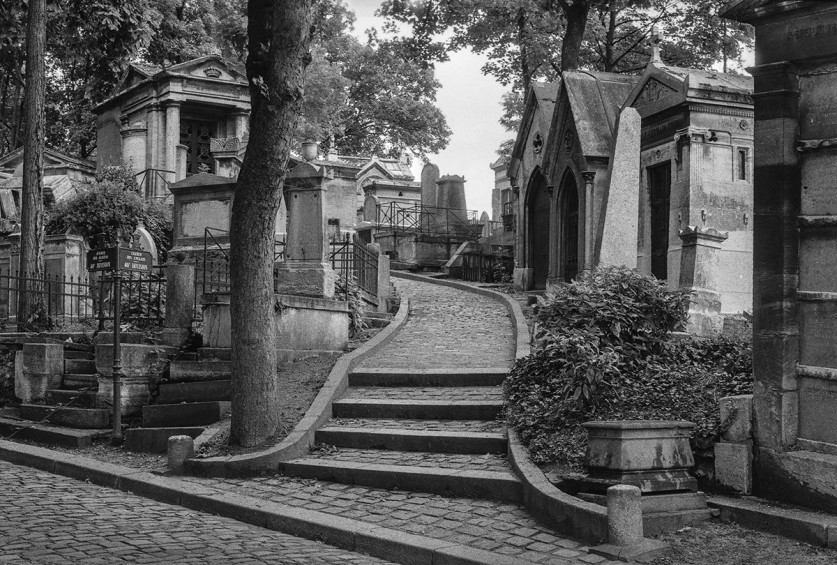
5. Where do you most commonly find or look for inspiration? Are there any artists or other photographers that have particularly influenced your work?
Since the middle of the nineteenth century, a number of photographers have built up a recognizable and significant body of work - images of the built environment that are now part of our cultural legacy. I studied images by Eugene Atget, Walker Evans, Ezra Stoller and others. After studying their photographs in books and exhibitions, I believe that the photographs by these key contributors come forward from my subconscious, from the pages of their monographs, influencing how I select and frame views. I look at photography as an evolving art form in our culture that continues to build up an inventory of meaningful images that continue to resonate.

6. What is next? Is there a region or locale that you haven’t photographed yet that you’d like to—or perhaps one you’d like to return to?
Putting together these portfolios for donation to The Cultural Landscape Foundation has led me to scan and process photographs of many sites that I have visited over the years. I am aiming for these portfolios to have between fifteen to thirty images. That has led me to return to sites, sometimes twenty years or more after the initial visit, to complete the story and add more photographs. As a result, the initial images are from scanned negatives which are then processed in Lightroom, while the new photography is all digital capture and processing. I embrace the current technology because it allows me to be much more efficient, however it still requires rigor, discipline, and vision in setting up views. I am especially keen on returning to France to photograph the parks and gardens in and around Paris and environs.

7. Are there similarities/differences between photographing building architecture and landscape architecture? As a follow up, what are the challenges unique to photographing landscape architecture? And, also as a follow up, what should viewers have in mind when looking at photographs of landscape architecture vs. building architecture?
There are some commonalities when photographing architecture and landscape architecture, such as the aim to depict a sense of space by using wide-angle lenses. I also approach both with the aim of a full tonal range from light to dark in the photographs, whether it is in color or black and white. There are significant differences as well between photographing architectural designs and landscape architectural designs. I tend to use a more panoramic format in photographing landscapes, because I believe it corresponds more closely to how we experience moving through a landscape. It is my sense that our perception of exterior space is dominated by seeing from side to side, while we tend to diminish the significance of the immediate foreground and what is overhead, thus a panoramic format corresponds to our directed perception of the landscape. Architectural photography is typically done during sunny conditions to reveal and enhance the three dimensionality of a building with clean sharp shadows. I find that photographs of landscape architecture are more effective in softer overcast light with a graduated tonal range to reveal the subtleties of vegetation. Light striking and revealing building façades is predictable, while light on the landscape can be elusive, varying with the weather and by the season. The dynamic nature of a living design along with the variability of light revealing the landscape is an ever-changing phenomenon. It can make it worthwhile to return to a site several times in different seasons to photograph the ephemeral quality of light on a landscape.



